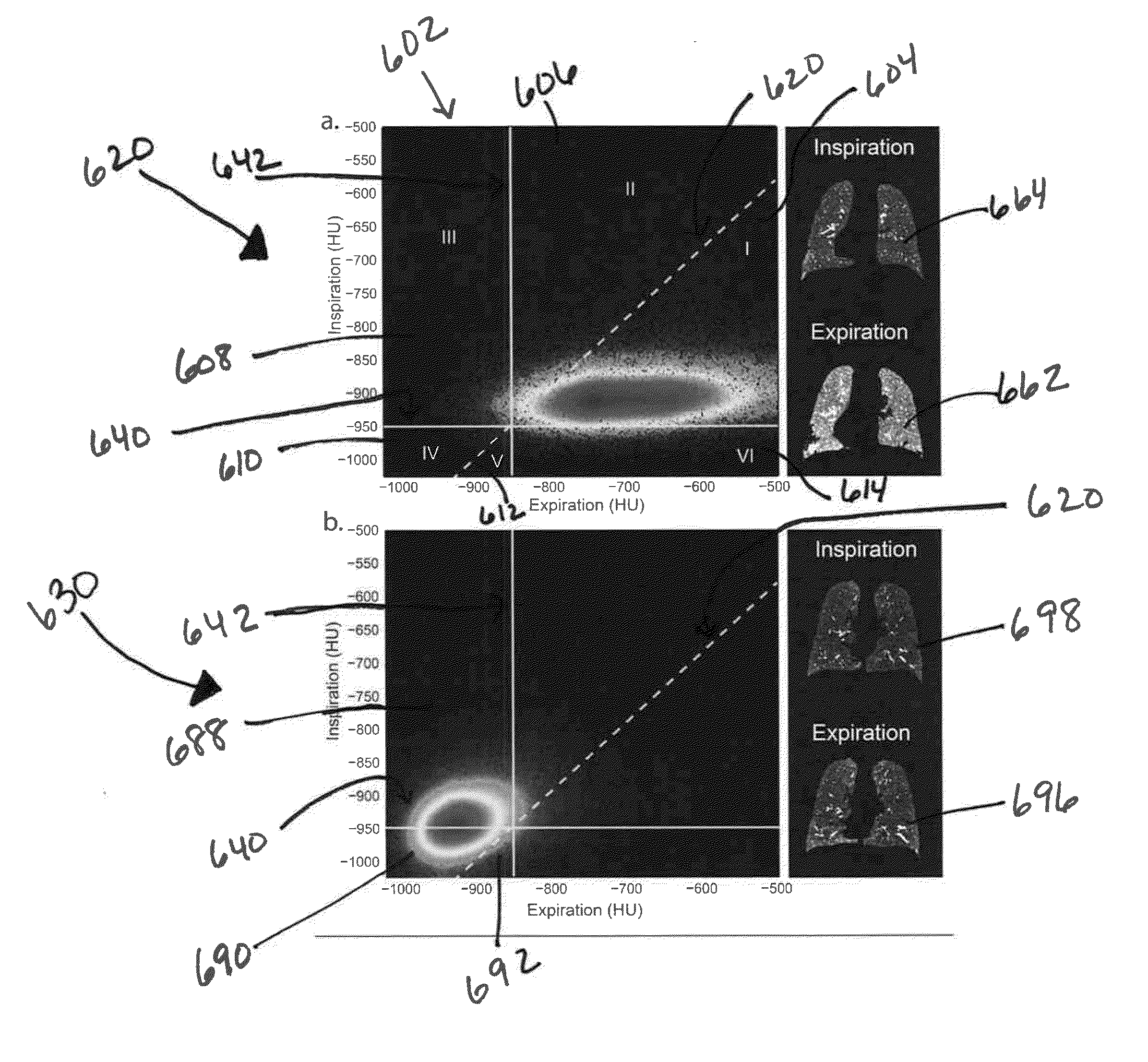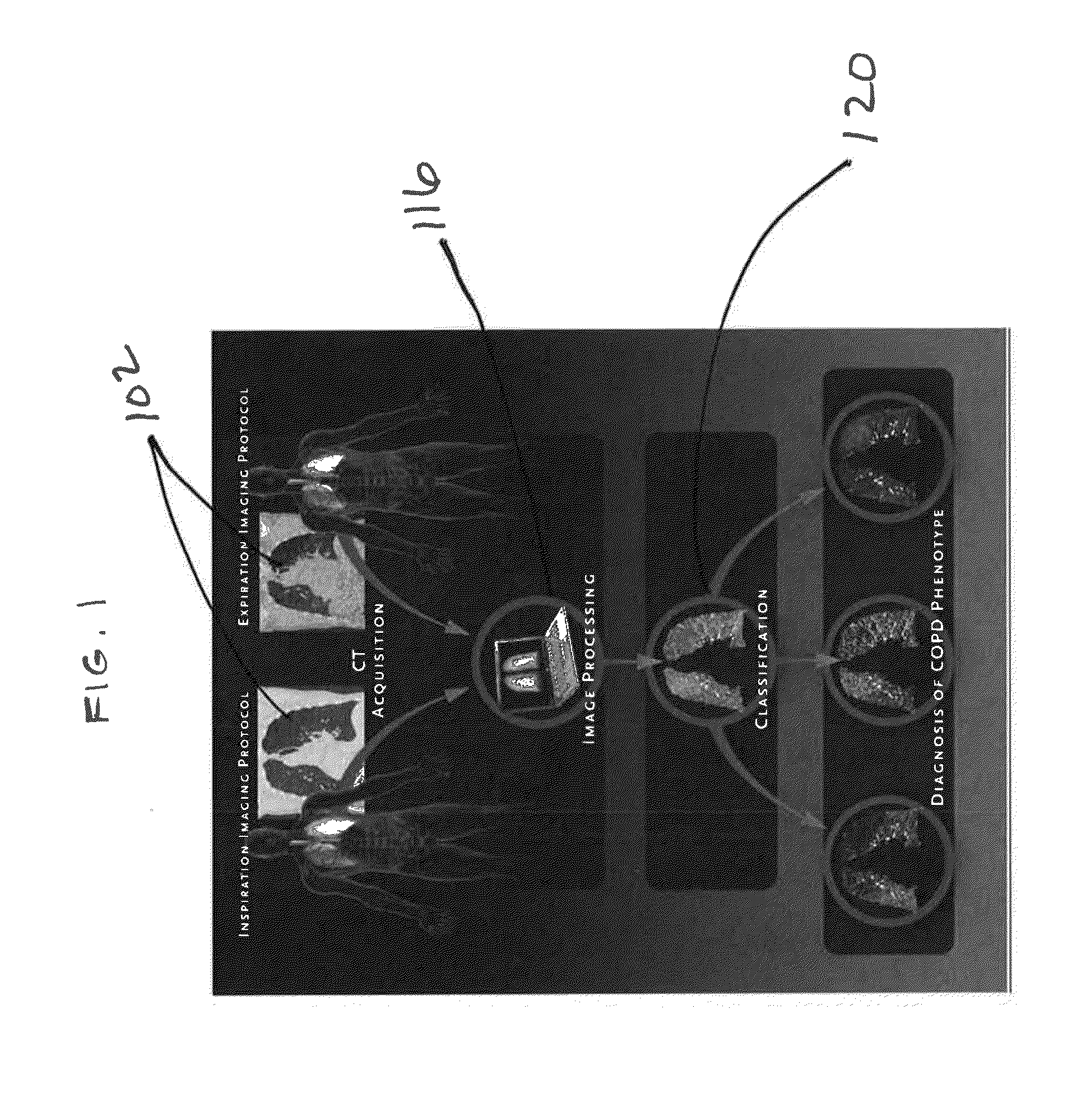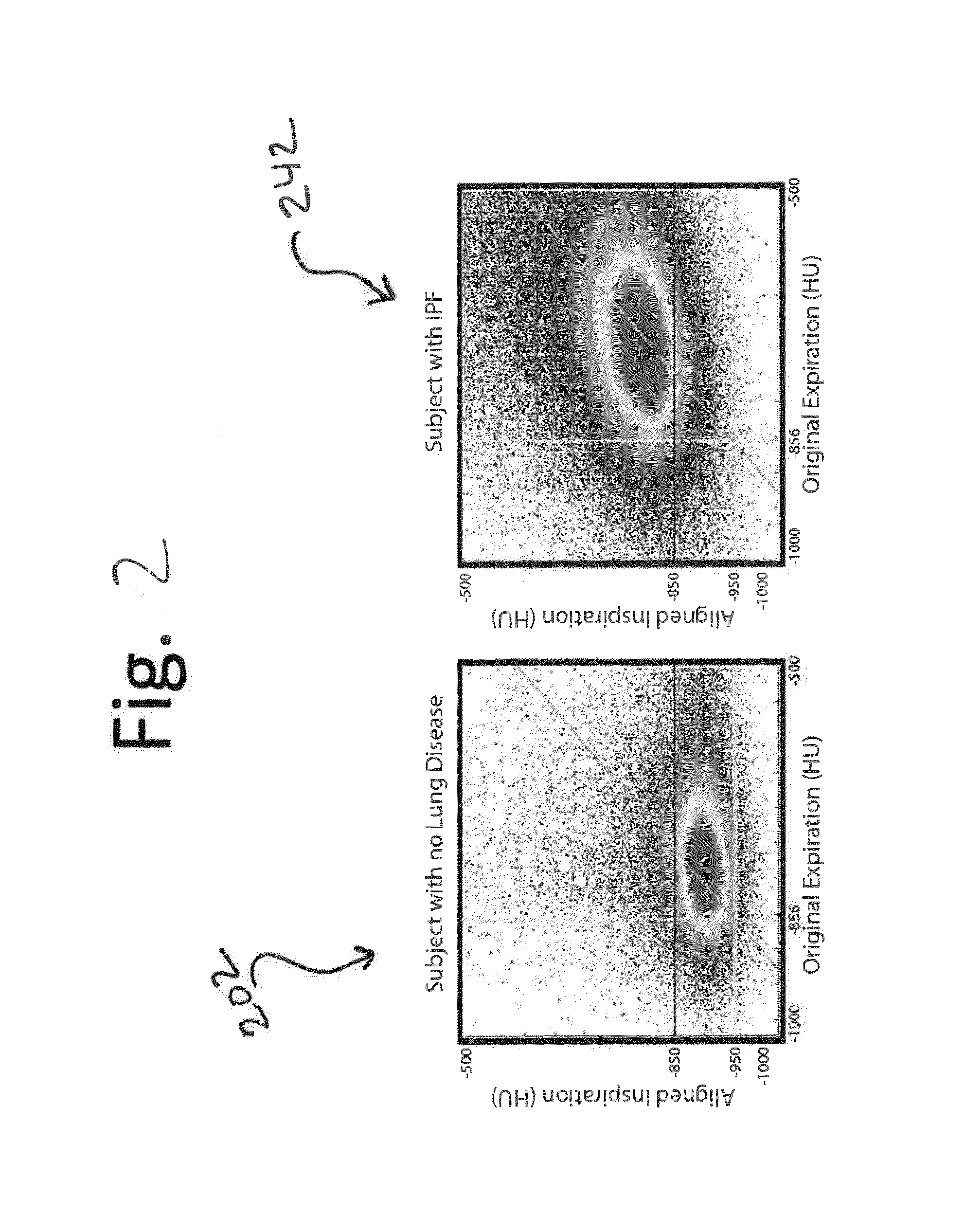Tissue Phasic Classification Mapping System and Method
a phasic classification and mapping technology, applied in the field of tissue phasic classification mapping system and method, can solve the problems of serious bodily injury, wheezing, chest tightness, and other symptoms, and achieve the effects of reducing the risk of infection, and improving the quality of li
- Summary
- Abstract
- Description
- Claims
- Application Information
AI Technical Summary
Benefits of technology
Problems solved by technology
Method used
Image
Examples
example 1
Lung Tissue and COPD Analysis Example
[0074]The study described in this example included subjects with a smoking history of at least 10 pack-years that were enrolled at the University of Michigan as part of the COPDGene Study. The subjects had no history of any active lung disease other than asthma, emphysema or COPD. Of these subjects, a total of 52 were analyzed for this retrospective study of subjects recruited at a single site, the University of Michigan. Patients underwent spirometry using the EasyOne™ spirometry system (ndd Inc. of Zurich, Switzerland) before and after the administration of short-acting bronchodilating medication (albuterol). Quality control was performed for all spirometry tests using both an automated system and manual review. Patient characteristics are summarized below in Table 1.
TABLE 1Patient characteristics and results of pulmonary function tests in52 patientsCharacteristicMean + / − SDMedianRangeAge62.8 (8.6) 63.746-80Pack-years 52 (28.2)45.5 11-156BMI27...
example 2
COPD Components: Emphysema and Small Airways Disease
[0088]Inspiratory and expiratory CT scans were acquired from 10,000 patients as part of the COPDGene Study (www.copdgene.org). Of these patients, 194 (n=194) with at least a 10 pack-year history of cigarette smoking and with varying GOLD statuses, as defined by Global Initiative for Chronic Obstructive Lung Disease (GOLD; www.goldcopd.com), were assessed via embodiments of the present disclosure. Subjects included had no history of any active lung disease other than asthma, emphysema or COPD. Patients underwent spirometry using the EASYONE spirometry system (ndd Medical Technologies Inc., Zurich, Switzerland) before and after the administration of a short-acting bronchodilator (albuterol). Quality control was performed for all spirometry tests using both an automated system and manual review. The COPDGene Study research protocol was approved by the Institutional Review Board, and all participants provided written informed consent. ...
example 3
[0102]In order to provide some insight into the feasibility of PRM as an imaging biomarker to monitor individuals longitudinally over time, we obtained additional retrospective imaging data outside of the COPDGene Study from subjects who had previously visited the University of Michigan pulmonary clinic and underwent inspiratory / expiratory CT scanning protocol over a period of time. Shown in FIG. 13 are examples of two different subjects 1302, 1304 along with the time intervals between CT exams, PRM metrics normal (green) 1316, fSAD (yellow) 1318, and emphysema (red) 1320 provided as relative volumes 1328, 1330 along with FEVs acquired as a standard PFT. As shown 1330, the subject which had considerable emphysema 1320 and fSAD 1318 at the baseline scan (month 0), had at 11 months later progressive emphysema greater than the loss of fSAD as there was an additional loss of normal functional lung 1316 as well. FEV1 was unchanged from 18% to 17% over this time interval. These two pathol...
PUM
 Login to View More
Login to View More Abstract
Description
Claims
Application Information
 Login to View More
Login to View More - R&D
- Intellectual Property
- Life Sciences
- Materials
- Tech Scout
- Unparalleled Data Quality
- Higher Quality Content
- 60% Fewer Hallucinations
Browse by: Latest US Patents, China's latest patents, Technical Efficacy Thesaurus, Application Domain, Technology Topic, Popular Technical Reports.
© 2025 PatSnap. All rights reserved.Legal|Privacy policy|Modern Slavery Act Transparency Statement|Sitemap|About US| Contact US: help@patsnap.com



